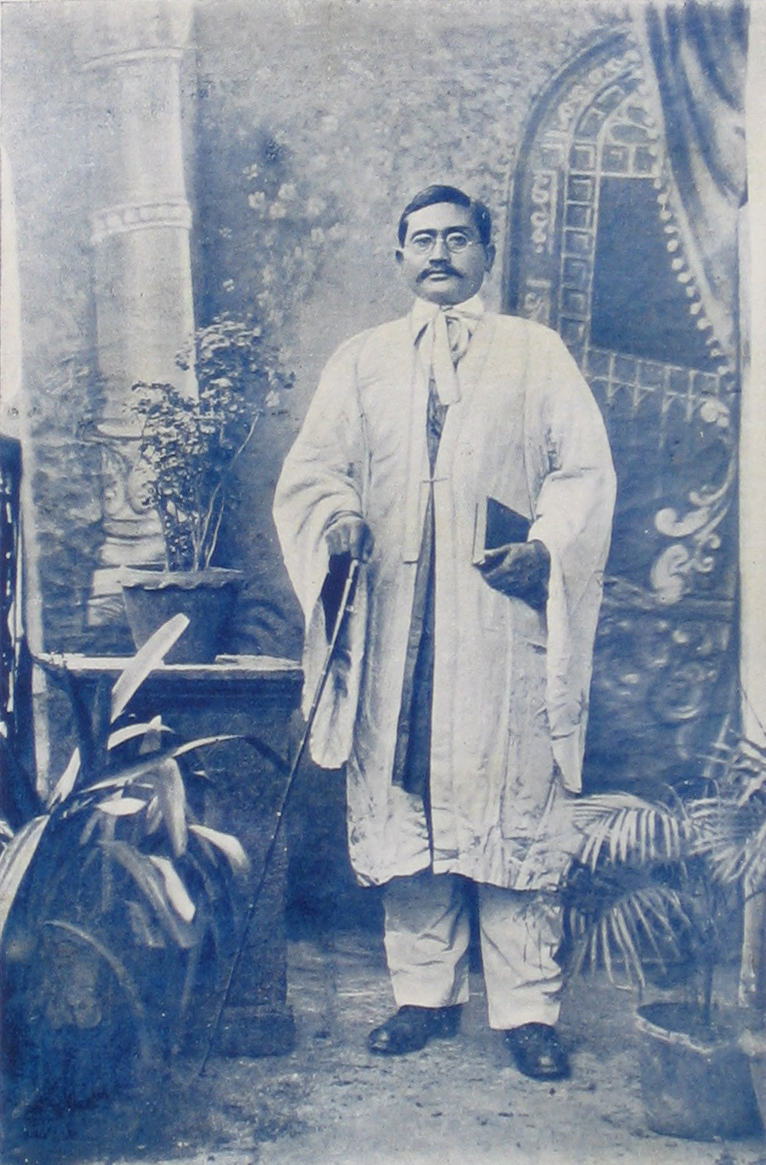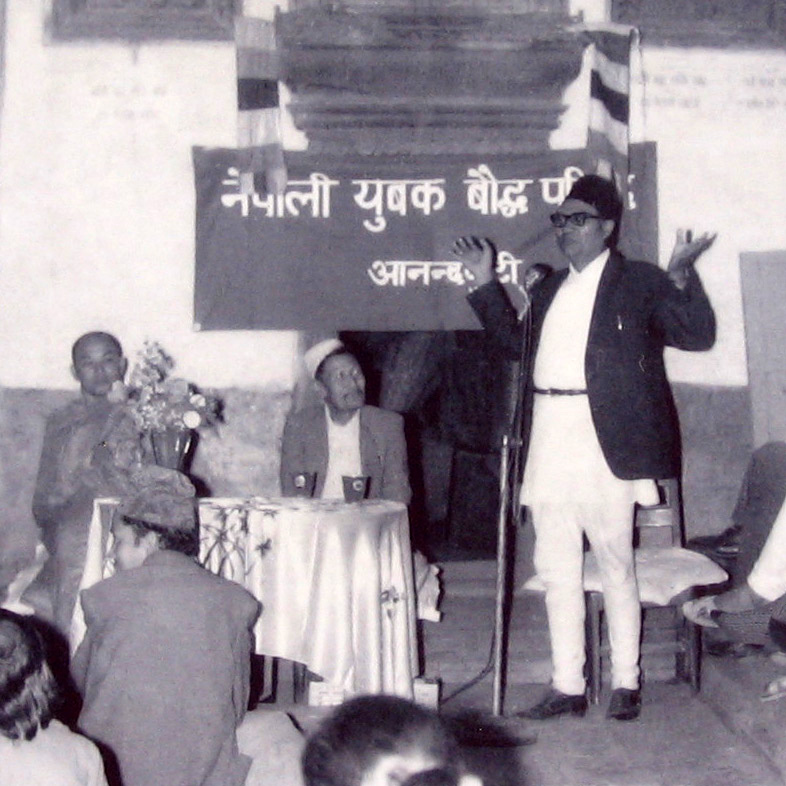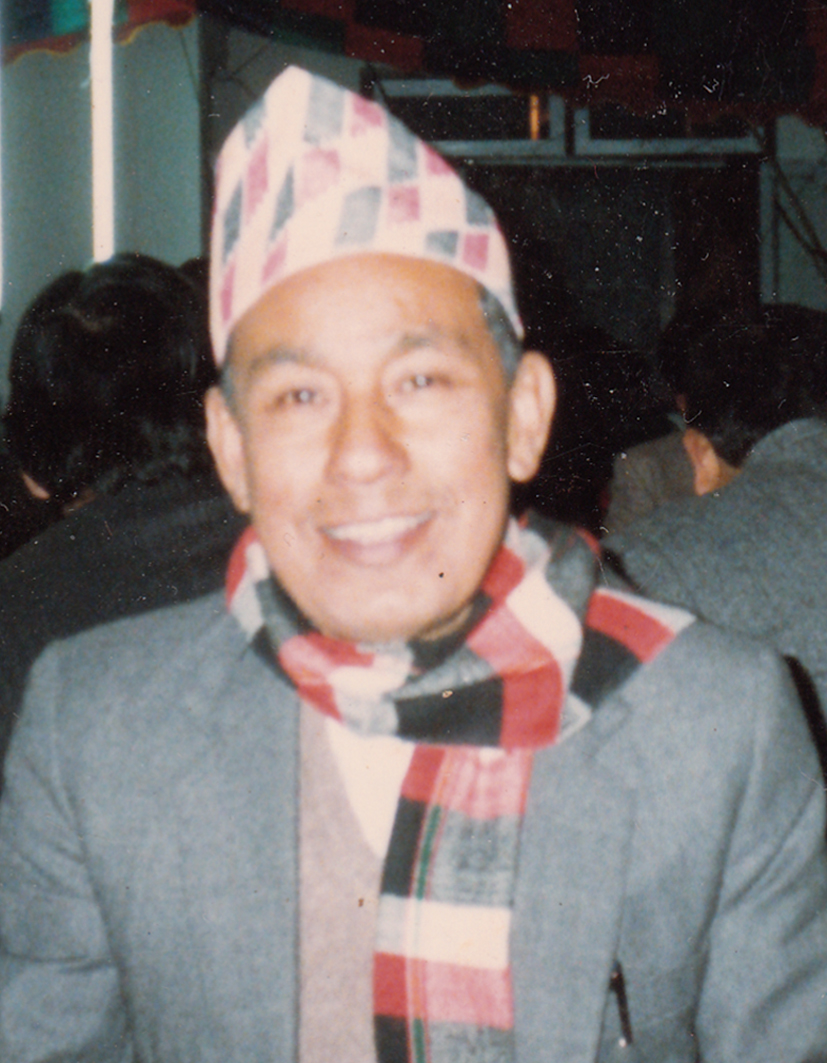|
List Of Newar-language Writers
{{Short description, none The Newar language, officially known in Nepal as Nepal Bhasa, is a Sino-Tibetan language with a long literary history. Its prominent writers include: * Jayaprakash Malla * Siddhidas Mahaju * Sukraraj Shastri * Chittadhar "Hridaya" * Siddhicharan Shrestha * Dhooswan Sayami * Durga Lal Shrestha * Dharma Ratna Yami * Girija Prasad Joshi * Rebati Ramanananda Shrestha Newar Writers A writer is a person who uses written words in different writing styles and techniques to communicate ideas. Writers produce different forms of literary art and creative writing such as novels, short stories, books, poetry, travelogues, plays ... Nepal Bhasa 1 Nepalese poets ... [...More Info...] [...Related Items...] OR: [Wikipedia] [Google] [Baidu] |
Newar Language
Newar (), or Newari and known officially in Nepal as Nepal Bhasa, is a Sino-Tibetan language spoken by the Newar people, the indigenous inhabitants of Nepal Mandala, which consists of the Kathmandu Valley and surrounding regions in Nepal. "Nepal Bhasa" literally means "Nepalese language", however the language is not the same as Nepali (Devanāgarī: नेपाली), the country's current official language of the central government. The two languages belong to different language families (Sino-Tibetan and Indo-European, respectively), but centuries of contact have resulted in a significant body of shared vocabulary. Newar was Nepal's administrative language from the 14th to the late 18th century. From the early 20th century until democratisation, Newar suffered from official suppression. From 1952 to 1991, the percentage of Newar speakers in the Kathmandu Valley dropped from 75% to 44% and today Newar culture and language are under threat. The language has been l ... [...More Info...] [...Related Items...] OR: [Wikipedia] [Google] [Baidu] |
Jayaprakash Malla
Jaya Prakash Malla ( ne, जयप्रकाश मल्ल) (died 1768) was the last king of Yen (यें) or Kantipur (कान्तिपुर) which corresponds to present-day Kathmandu. He ruled from 1736 to 1746, and then from 1750 until his death in 1769. He spent most of his reign in constant conflict with other Nepali kingdoms including that of Prithvi Narayan Shah in the Battle of Kathmandu. He was the last king of Kathmandu (at that time, Kathmandu functioned as an independent state or principality) before King Prithvi Narayan Shah attacked Kathmandu when the Kathmandu city folk were celebrating the festival of Indrajatra and conquered it. He contributed to the literature of Nepal Bhasa with works such as "Padma Samuchaya" and three dramas that were concerned with Hindu mythology being ''Ratneshwar Pradurbhav'', ''Birdhwojopakhyan Natakam'' and ''Bhairavpradurbhav''. When Gorkhali king Prithvi Narayan Shah attacked Nuwakot, a protectorate of Kantipur, Jaya P ... [...More Info...] [...Related Items...] OR: [Wikipedia] [Google] [Baidu] |
Siddhidas Mahaju
Siddhidas Mahaju ( ne, सिद्धिदास महाजु) (alternative name: Siddhidas Amatya) (15 October 1867 – 29 December 1929) was a Nepalese poet and one of the Four Pillars of Nepal Bhasa. He was at the forefront in the endeavour to revive literature in Nepal Bhasa that had become stagnant as a result of official suppression. He has been honored with the title Great Poet. Early life Mahaju was born in Kel Tol, Kathmandu to father Laxmi Narayan and mother Harsha Laxmi. He studied at home under various tutors, and married Ganga Devi at an early age. Career Mahaju looked after his family's cloth shop as a young man after a stint in government service in 1886. He had to travel frequently to Kolkata, India to purchase stock, and he took advantage of the opportunity to browse libraries and book stores. In Kathmandu, he spent more time composing poetry than looking after business, and his cloth shop suffered. Finding it difficult to make ends meet, he went to Bi ... [...More Info...] [...Related Items...] OR: [Wikipedia] [Google] [Baidu] |
Sukraraj Shastri
Shukra Raj Shastri (Nepali: ) (born Shukra Raj Joshi) (1894–24 January 1941) was a Nepalese intellectual and fighter for democracy who was executed by the autocratic Rana dynasty. He is one of the four martyrs of the Nepalese revolution that toppled the Rana regime. The other three are Dashrath Chand, Dharma Bhakta Mathema and Ganga Lal Shrestha. Shastri was also a social reformer and author who wrote a number of books in Nepali and Nepal Bhasa. Early life Shastri was born in Varanasi, India where his father Madhav Raj and mother Ratna Maya Joshi were living in forced exile due to political reasons. Madhav Raj was a leader of the Arya Samaj in Nepal. The Joshis were originally from Lalitpur. Shukra Raj was schooled in India, and he acquired the title Shastri after earning a Shastri degree from Dehradun. He became better known by this name than his actual surname Joshi. Democracy fighter Returning to Nepal, Shastri joined the democracy struggle. During a demonstration ... [...More Info...] [...Related Items...] OR: [Wikipedia] [Google] [Baidu] |
Chittadhar "Hridaya"
Chittadhar Hridaya ( ne, चित्तधर हृदय; born Chittadhar Tuladhar; 19 May 1906 – 9 June 1982) was a Nepalese poet. He is regarded as one of the greatest literary figures from Nepal in the 20th century. The title of Kavi Keshari (Lion among Poets) was conferred on him by King Mahendra of Nepal in 1956. He wrote primarily in Nepal Bhasa but has created works in Nepali and Hindi too. Hridaya dedicated his life to serving his mother tongue, rejecting a flourishing ancestral business and suffering imprisonment by an autocratic government. In 1941, he was jailed for five years by the Rana regime for writing a poem in Nepal Bhasa in a crackdown against the language. Early life Hridaya was born Chittadhar Tuladhar at Nyata Tunchhen ( Nepal Bhasa: ) in Kathmandu to a family of hereditary Lhasa Newar traders. His father was Drabya Dhar Tuladhar and his mother was Gyan Laxmi Tuladhar. His sister Moti Laxmi Upasika was also a writer. The family owned a busines ... [...More Info...] [...Related Items...] OR: [Wikipedia] [Google] [Baidu] |
Siddhicharan Shrestha
Siddhicharan Shrestha (Devanagari: सिद्धिचरण श्रेष्ठ; 21 May 1912 – 4 June 1992) was one of the most prominent writers of Nepal. He contributed to the struggle against the autocratic Rana regime (1846–1951) through his writings. His revolutionary poetry aroused freedom fighters, and he was sentenced to 18 years in jail for his literary activities. He wrote in Nepal Bhasa and Nepali. His poem ''Mero Pyaro Okhaldhunga'' () in Nepali is considered to be one of his masterpieces. In this poem, he has expressed how proud he is to describe the place Okhaldhunga in eastern Nepal, where he was born and grew up. Early years Shrestha's ancestors moved to Ombahal of Kathmandu from Bhaktapur. His father Bishnu Charan (novelist) worked for the government and wrote novels like ''Sumati'' and ''Bhismapratigya''. In the course of his service, he was transferred to Okhaldhunga in east Nepal where he was born on 21 May 1912 (9 Jestha 1969 B.S.) and spent his ch ... [...More Info...] [...Related Items...] OR: [Wikipedia] [Google] [Baidu] |
Dhooswan Sayami
Govinda Bahadur Manandhar, popularly known as Dhooswan Sayami (1930-2007) was a Nepali writer, who wrote primarily in Nepal Bhasa. He also wrote in Hindi and Nepali Nepali or Nepalese may refer to : Concerning Nepal * Anything of, from, or related to Nepal * Nepali people, citizens of Nepal * Nepali language, an Indo-Aryan language found in Nepal, the current official national language and a language spoken .... He is well known for his contribution to the field of prose fiction. He is considered the first novelist in Nepal Bhasa. Biography He was born on 24 May 1930 (10 Jestha 1987 BS) in Jhochhen, Kathmandu to father Narayan Bahadur Manandhar and mother Daan Maya Manandhar. He belongned to a wealthy business family of Nepal which had principal business in Gaur. He was the first child of his parents. He obtained a Master's degree in Culture from Banaras Hindu University. He changed his firstname to Dhoowsan ( flower of dust in Nepal Bhasa) and famil name to Sayami (a slu ... [...More Info...] [...Related Items...] OR: [Wikipedia] [Google] [Baidu] |
Durga Lal Shrestha
Durga Lal Shrestha (born July 1935) is a Nepalese poet of Nepal Bhasa and Nepali. He was conferred with the title of ''Janakavi'' ( lit. people's poet) by Nepal Bhasha Parishad in 2003. He is considered as a progressive litterateur. He was awarded the Jagadamba Shree Puraskar in 2010 for "enriching Nepalese literature by writing very melodious songs, poems, poetry and children's literature in his mother tongue (Nepal Bhasa) and Nepali language for the last six decades." Biography Shrestha was born in a lower–middle class Newar family in 1935 (1992 BS) in the Nepalese capital city of Kathmandu to mother Asha Moti Shrestha and father Ganesh Lal Shrestha. He received his school level education from Padmodaya Secondary School. He started his writing career in around 1949. His first poem titled ''Dui Thopa'' ( lit. Two Drops) was published in 1952 in ''Suskera'' magazine. He has on multiple awards including Narottamdas-Indira Award, Abhiyan Award, Noor-Ganga Award, Rashtriya ... [...More Info...] [...Related Items...] OR: [Wikipedia] [Google] [Baidu] |
Dharma Ratna Yami
Dharma Ratna Tuladhar, popularly known as Dharma Ratna Yami ( ne, धर्मरत्न यमी) was a Nepalese government deputy minister, activist and Newa language writer While serving eighteen years jail term, he changed his surname from Tuladhar to ''Yami'' (meaning an inhabitant of Kathmandu in Nepal Bhasa) and identified himself as Newa. He in the jail to unite and organized communities against the Rana rulers. Early life Yami was born to father Bhawani Ratna, son of rich business merchant Late Ratna Das Tuladhar and Mother Devi Maya Tuladhar at Asan Kamalachhi (), Kathmandu. His was an affluent merchant family which was made penniless after the Rana regime confiscated their property. Yami was schooled at home. In 1930, he traveled to Lhasa and worked in the business house of Dharma Man Tuladhar. In Tibet, he came in contact with Mahapandit Rahul Sankrityayan; and under his influence and inspiration, he studied books on various subjects and began writing himself. ... [...More Info...] [...Related Items...] OR: [Wikipedia] [Google] [Baidu] |
Girija Prasad Joshi
Girija is one of the names of Parvati, the wife of the Hindu god Shiva. The word in Sanskrit means "one who is born to mountain (Giri)". Girija Kalyanam means the Marriage of Girija, is popular novel by Yaddanapudi Sulochana Rani, which was made into a film and a TV serial. Girija may refer to: People * Girija (actress) (1938–1995), Telugu film actress * V. M. Girija (born 1961), Indian poet and essayist Given name * Girija Shankar Bajpai (1891–1954), Indian civil servant and diplomat * Girija Devi (1929–2017), Indian classical singer of the Banaras gharana * Girija Prasad Koirala (1924–2010), Nepalese politician (1925–2010), President of the Nepali Congress and Prime Minister of Nepal * Girija Shettar (born 1969), Indian actress * Girija Vyas (born 1946), Indian politician, poet, and author * Girija Keer (1933–2019), Indian Marathi language writer * Girija Prasad Joshi (1939–1987), Nepalese poet * Girija Oak Girija Oak is an Indian actress known for her pe ... [...More Info...] [...Related Items...] OR: [Wikipedia] [Google] [Baidu] |
Rebati Ramanananda Shrestha
Rebati Ramanananda Shrestha ( ne, रेबतिरमणानन्द श्रेष्ठ) (1932–2002) was a Nepalese freedom fighter, journalist and Nepal Bhasa author. He also wrote under the pen name R. R. N. Syasya (रे. रे. न. स्यस्य). His works range from poems and epics to essays and short stories. He has written books on history, language, culture and religion. Early life Shrestha (alternative names: Rebati Ramanananda Shrestha Vaidya and Revatiramanananda Sreshtha Vaidya) was born in Kathmandu to father Basudevananda and mother Chandra Maya Shrestha. He was educated at Durbar High School in Kathmandu. Political career Shrestha joined the underground movement against the Rana dynasty in 1948 while a student at Durbar High. In 1949, he formed an underground organization named Suhrid Mandal to carry on the struggle for democracy in Nepal. The group disbanded as the authorities were beginning to close in on it. After finishing the School Le ... [...More Info...] [...Related Items...] OR: [Wikipedia] [Google] [Baidu] |
Newar
Newar (; new, नेवार, endonym: Newa; new, नेवा, Pracalit script:) or Nepami, are the historical inhabitants of the Kathmandu Valley and its surrounding areas in Nepal and the creators of its historic heritage and civilisation. Page 15. Newars form a linguistic and cultural community of primarily Indo-Aryan and Tibeto-Burman ethnicities following Hinduism and Buddhism with Nepal Bhasa as their common language. Newars have developed a division of labour and a sophisticated urban civilisation not seen elsewhere in the Himalayan foothills. Newars have continued their age-old traditions and practices and pride themselves as the true custodians of the religion, culture and civilisation of Nepal. Newars are known for their contributions to culture, art and literature, trade, agriculture and cuisine. Today, they consistently rank as the most economically and socially advanced community of Nepal, according to the annual Human Development Index published by UNDP. Nep ... [...More Info...] [...Related Items...] OR: [Wikipedia] [Google] [Baidu] |






